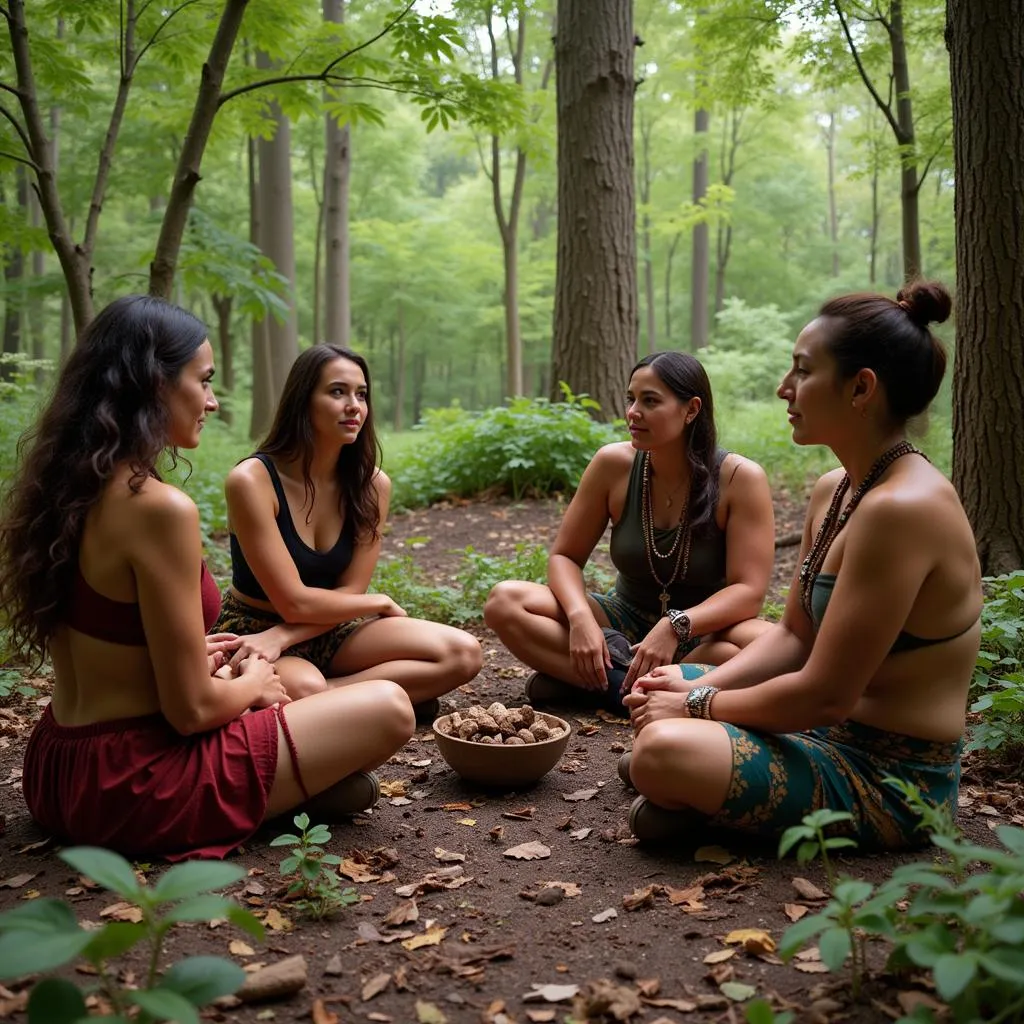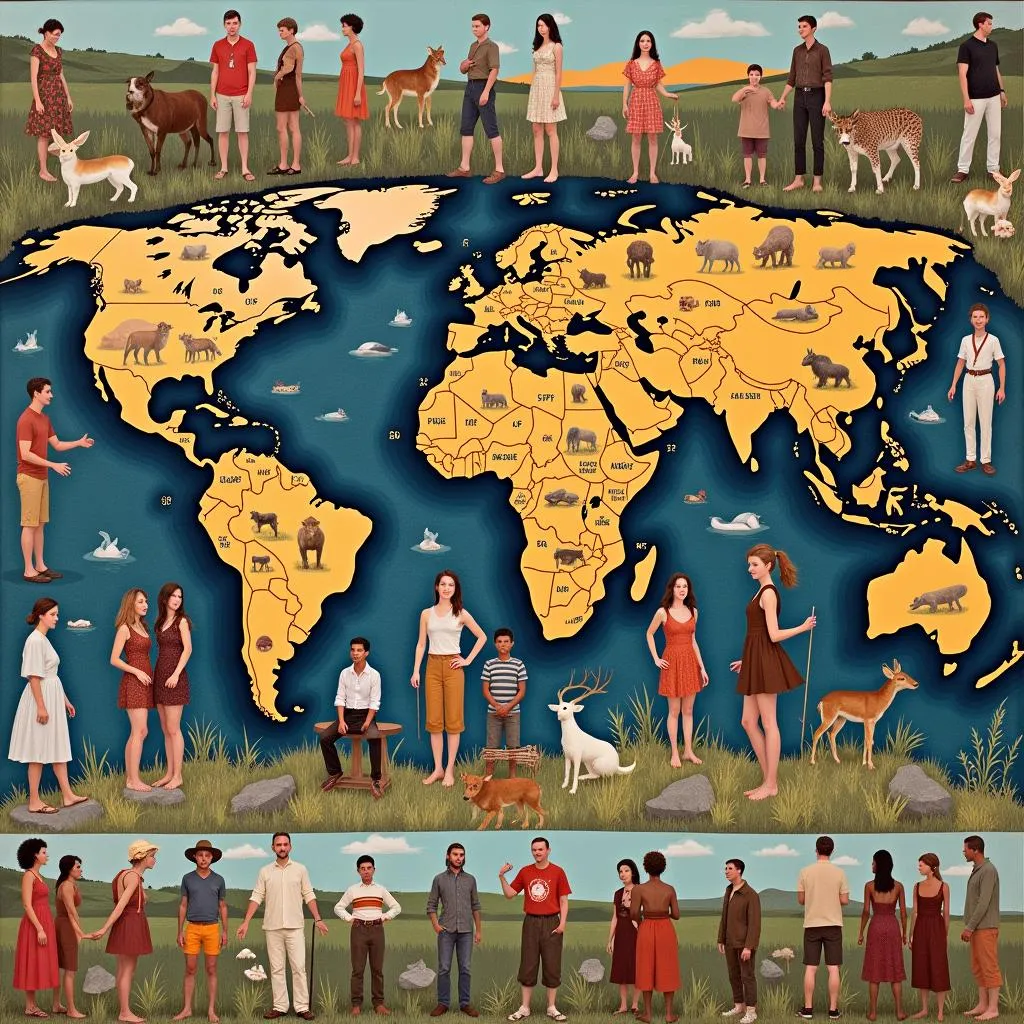Foraging societies, characterized by their reliance on hunting and gathering for sustenance, present a fascinating puzzle when it comes to social hierarchy. Unlike many other societal structures, class stratification, the division of people into distinct socioeconomic tiers, is virtually absent. But why doesn’t class stratification develop in foraging societies?
The Egalitarian Nature of Foraging Societies
At the heart of foraging societies lies a deeply ingrained egalitarian ethos. This equality is rooted in several key factors:
-
Shared Ownership and Resources: Unlike agrarian or industrial societies where land and resources are often privately owned, foragers typically view these as communal property. This collective ownership discourages the accumulation of wealth and fosters a sense of shared responsibility.
-
Mobility and Flexibility: The nomadic lifestyle of many foraging groups necessitates minimal material possessions and a focus on sharing. Since resources are often unpredictable, hoarding is impractical and cooperation becomes essential for survival.
-
Value of Sharing and Cooperation: Foraging cultures often emphasize the importance of sharing food and resources. This practice, often driven by a strong sense of reciprocity, helps to mitigate against individualistic tendencies and promotes social cohesion.
 Foraging tribe members sharing food
Foraging tribe members sharing food
Mechanisms for Maintaining Equality
Beyond these fundamental values, foraging societies have developed sophisticated mechanisms to actively prevent the emergence of social hierarchies:
-
Social Pressure and Leveling Mechanisms: Boasting, arrogance, and attempts to assert dominance are often met with ridicule, shaming, or ostracism. These social pressures act as powerful deterrents against individuals seeking to elevate themselves above others.
-
Emphasis on Humility and Consensus-Based Decision Making: Leadership within foraging groups is often informal and situational, based on experience and respect rather than inherited power. Decision-making tends to be consensus-driven, ensuring that all voices are heard and preventing the concentration of power in the hands of a few.
-
Fluid Social Structures: The absence of rigid social boundaries allows individuals to move relatively freely within the group. This fluidity makes it difficult for fixed hierarchies to take root.
 Foraging tribe members discussing and making decisions together
Foraging tribe members discussing and making decisions together
Environmental Constraints and Social Organization
The very nature of the foraging lifestyle itself plays a crucial role in shaping social structures:
-
Limited Surplus and Storage: The constant need to procure food leaves little room for accumulating surplus resources. Without the ability to amass and store wealth, the economic basis for class stratification is largely absent.
-
Dependence on the Natural World: Foragers are acutely aware of their dependence on the natural world. This interconnectedness fosters a sense of shared vulnerability and discourages the exploitation of others.
A Note of Caution: Diversity and Change
It is essential to acknowledge the diversity among foraging societies. While the absence of class stratification is a common characteristic, variations exist. Furthermore, contact with other cultures, environmental changes, and shifts in subsistence strategies can all influence social dynamics.
 Depiction of the diversity of foraging communities worldwide
Depiction of the diversity of foraging communities worldwide
Conclusion
The egalitarian nature of foraging societies provides valuable insights into alternative models of social organization. While not without their challenges, these societies demonstrate that human societies can thrive without rigid hierarchies and that cooperation and equality can be powerful forces for survival and well-being. By understanding the factors that contribute to this lack of class stratification, we can gain a deeper appreciation for the diversity of human social structures and perhaps glean valuable lessons for creating more equitable societies in the future.
FAQ
1. Are there any examples of foraging societies that developed social hierarchies?
While rare, there are a few documented instances where foraging societies exhibited some degree of social stratification, often linked to resource abundance or external influences. However, these cases are exceptions rather than the norm.
2. Did the development of agriculture lead to the emergence of class systems?
The transition from foraging to agriculture brought about significant social and economic changes, including the potential for surplus accumulation and land ownership. These factors played a role in the emergence of more complex social hierarchies and class systems in many societies.
Need Help?
For support, please contact Phone Number: 02043854663, Email: [email protected], or visit us at Zone 34, Bac Giang, 260000, Vietnam. Our customer service team is available 24/7.